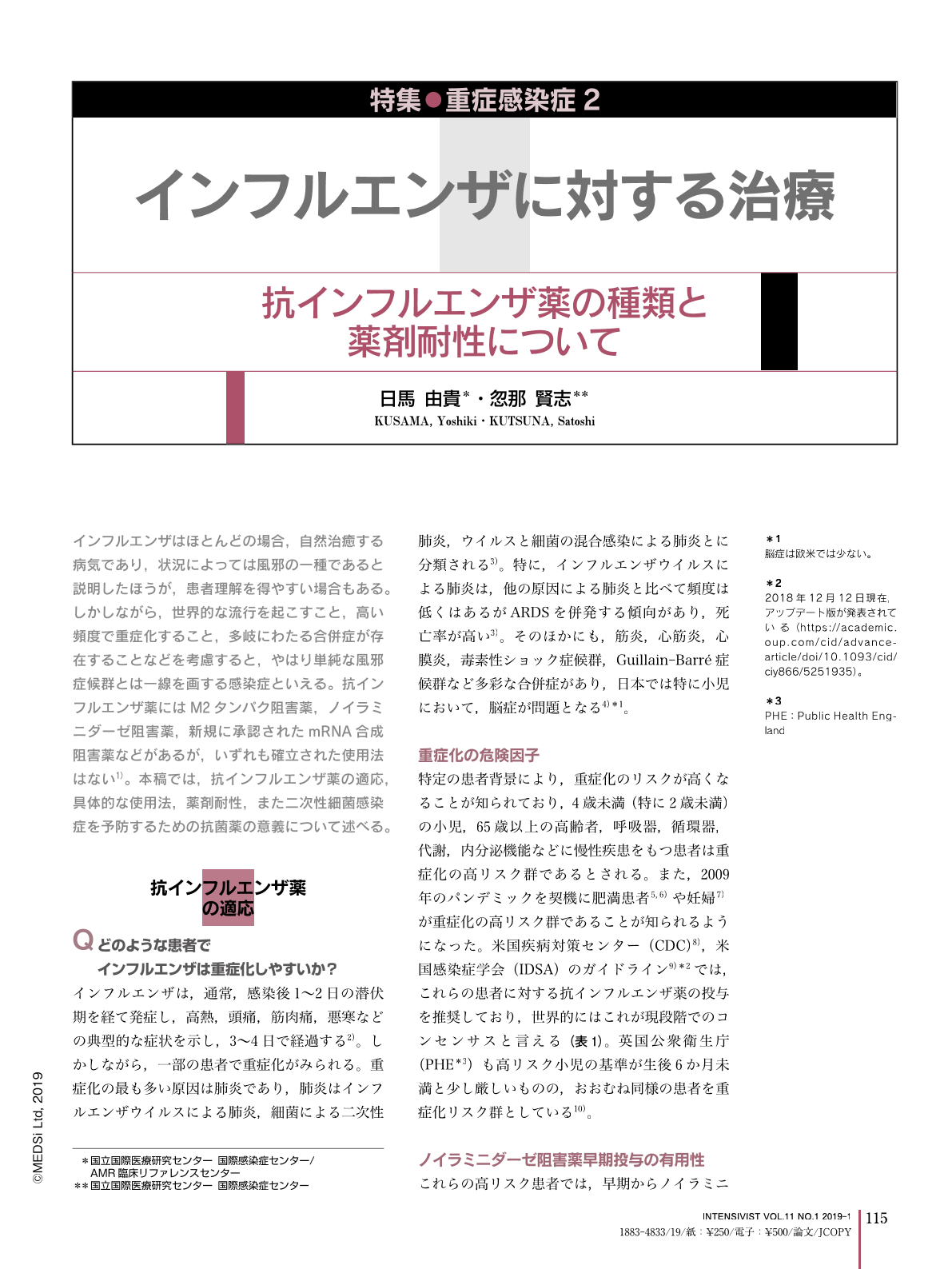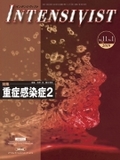Japanese
English
- 有料閲覧
- Abstract 文献概要
- 1ページ目 Look Inside
- 参考文献 Reference
インフルエンザはほとんどの場合,自然治癒する病気であり,状況によっては風邪の一種であると説明したほうが,患者理解を得やすい場合もある。しかしながら,世界的な流行を起こすこと,高い頻度で重症化すること,多岐にわたる合併症が存在することなどを考慮すると,やはり単純な風邪症候群とは一線を画する感染症といえる。抗インフルエンザ薬にはM2タンパク阻害薬,ノイラミニダーゼ阻害薬,新規に承認されたmRNA合成阻害薬などがあるが,いずれも確立された使用法はない1)。本稿では,抗インフルエンザ薬の適応,具体的な使用法,薬剤耐性,また二次性細菌感染症を予防するための抗菌薬の意義について述べる。
Seven anti-seasonal influenza drugs, including amantadine, oseltamivir, zanamivir, laninamivir, peramivir and baloxavir, are currently available in Japan. However, there is insufficient evidence for clinical effects of these drugs against seasonal influenza. Especially in critically ill patients, the appropriate treatment of seasonal influenza is undefined. Early administration of anti-seasonal influenza drugs is recommended for pediatric, pregnant, elderly, and facility resident patients who have risk factors for the development of flu-related complications. In the 2007-2008 season, oseltamivir-resistant seasonal influenza, Russian A (H1N1) type, spread worldwide from Norway. This resistant seasonal influenza is no longer prevalent because the virus was replaced by influenza A (H1N1)pdm09. However, further monitoring is needed. Baloxavir became available for seasonal influenza in 2018, but current evidence shows that it should only be given to healthy individuals for now. Therefore, we should cautiously use this drug, especially when administering it to critically ill patients. Since antibiotic resistance is a global concern, antibiotics should be administered only when evidence of bacterial infections is found in patients with seasonal influenza. Currently, routinely adding vancomycin as empiric therapy against a bacterial pneumonia co-infection with seasonal influenza is not recommended. Monitoring the epidemiology of methicillin-resistant Staphylococcus aureus prevalence is important.

Copyright © 2019, MEDICAL SCIENCES INTERNATIONAL, LTD. All rights reserved.


